Horsham Steam Laundry personal account conjures up sights and smells of times gone by
and live on Freeview channel 276
There are lots of items in the Horsham Museum and Art Gallery collection relating to the laundry and Jeremy Knight, heritage and museum manager, has been delving into its history.
A personal account was given to the museum in 1988 by a lady who lived in Pulborough, which Jeremy has been comparing to a 130-year-old account of how the laundry operated, taken from a contemporary newspaper.
Advertisement
Hide AdAdvertisement
Hide AdHe said: “While the author of the letter in the newspaper was obviously mistaken about the dates, it doesn’t matter as her account is very human.
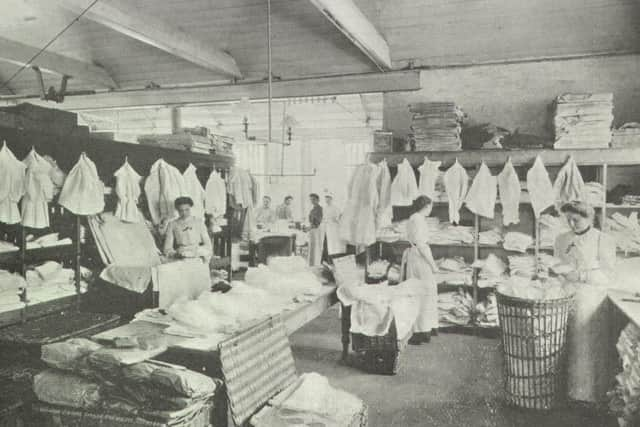

“The journalist is more matter of fact, and these contrasting approaches give a real flavour, or should I say smell, of the laundry. For those who love the ‘inside the factory’ type of documentaries, it should make for fascinating reading.”
Mrs Annie Orange Hogben started the laundry in Stanley Street and began by pushing a handcart around Horsham, collecting and delivering washing.
In the personal account provided by her great-niece, it says Mrs Hogben came to Horsham in the late 1890s with her husband but the newspaper article dated October 1888 tells of an inspection of the laundry, which had been open only 13 weeks.
Advertisement
Hide AdAdvertisement
Hide AdAs the years went by, the business flourished and though Mr Hogben died at an early age, Annie carried on with the help of one of her sisters.
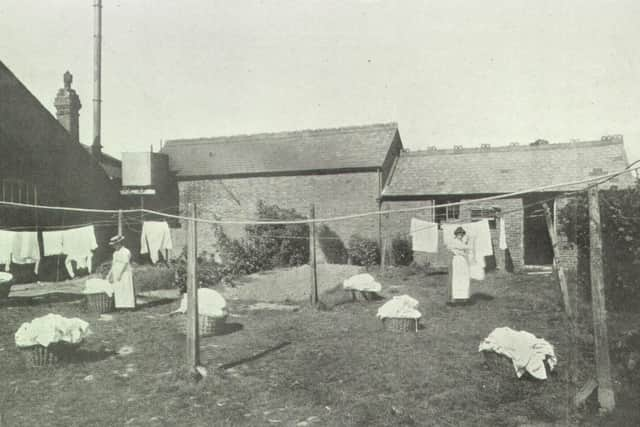

Later, four more sisters joined her, all unmarried and collectively known as The Miss Wymans. Mrs Hogben’s nephew, Charles Wyman, also joined his aunt in the business after the First World War.
The staff of around 100 included sorters, packers, washers and ironers. In the days of gentlemen’s starched high wing collars and ladies’ delicate laces and garments that had to be goffered, the ironers had to be expert.
Laundry marks were embroidered by hand, using coloured threads and alphabetical letters.
Advertisement
Hide AdAdvertisement
Hide AdThe delivery service covered many of the big country houses around Sussex, including Parham Park and Lord Nethercoat’s estate at Holbrook Park.
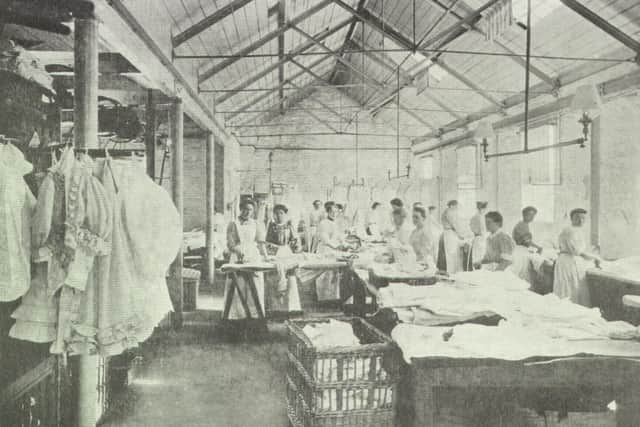

Mr Wyman’s daughter said: “I never remember my mother doing any washing at home. The laundry baskets went to and fro, returning with beautifully clean and folded clothes between sheets of blue tissue paper.
“Like a lot of businesses, the laundry suffered a great deal during the war years. The Second World War brought soap rationing, petrol and fuel rationing, and there was the recruitment of the men, and many of the girls were directed into munitions and the armed forces.
“Despite an incendiary bomb and the government’s order to do a ‘bag wash’ for the troops in the area, the business ticked over. Luckily, they still had the contract for the Horsham Hospital, but losing this at the end of the war, when the hospital built their own laundry, spelled doom. The machinery was badly worn and new equipment was costly. The age of the washing machine in every household had come.”
Advertisement
Hide AdAdvertisement
Hide AdAnnie Hogben died in the early days of the Second World War and Mr Wyman, under considerable financial pressure, was forced to sell the business in the mid-1950s.
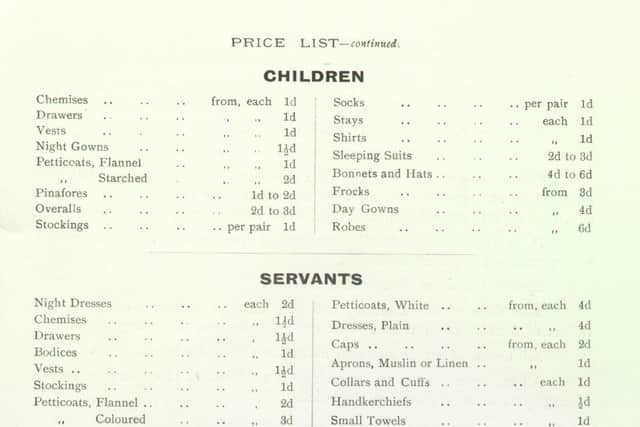

His daughter said: “Modern washing powders will never replace the smell of Sunlight soap, Borax and starch.”
When the business first opened, it was inspected by Mr Ellice Clark, president of the Association of Municipal and Sanitary Engineers, who reported: “The system adopted and the attention paid to details, the excellence of the machinery, the airiness of the premises, and the space allowed for each operation of sorting, washing, drying, ironing, and mangling form a marked contrast to the insanitary manner in which laundry work is carried on under the cottage method. There should be no risk whatever of contagious diseases being spread from this laundry, as is too often the case when ‘washing’ is done by private persons.”
The newspaper report goes on to give an extensive account of the processes involved and the machinery and appliances used, marvelling at the shear ingenuity of the works.
Advertisement
Hide AdAdvertisement
Hide Ad“We have had an opportunity of inspecting the property this week, and must admit that we were surprised to find so complete and admirable an institution had been set up in our midst, for the purposes of the laundry.
“The laundry stands in enclosed ground about half-an-acre in extent, the main building being several yards from the entrance gates. The building is a substantial one of brick and stone, with an ornamental entrance. Just inside, on the left, is a door leading into what may be termed the ‘reception room’ (where all the laundry is brought) attached to this, is a small room for private washing.
“The clothes, having been sorted, are carried out into the washing room, a large apartment which, like the rest of the building has a cemented floor. There they are placed either in the circular revolving washing machines (which are driven by steam), or the washing troughs at the side of the room.
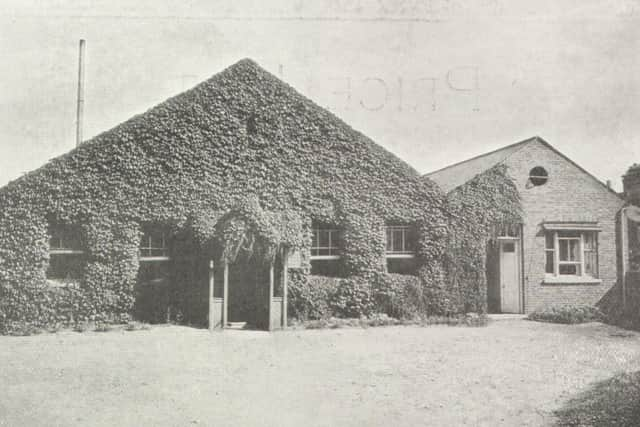

“No chemicals whatever are used in the operation but the washing is done simply with soap and water, and the machines are so constructed inside as to render it absolutely impossible that any damage can be done to the clothes.
Advertisement
Hide AdAdvertisement
Hide Ad“To each of the troughs before referred to cold water is laid on, and there is another tap, with pipe running down to the bottom of the trough. This, on being turned on, lets in a supply of steam, which in a few seconds heats the water in the trough to boiling heat.
“Adjoining the washing machines are large wooden troughs used successively for rinsing and blueing purposes, and when these operations have been performed, and the clothes have passed through a ‘wringer’ attached to the blue trough they are placed in the Hydra-extractor, a very unique machine, shaped like a large tub, with a revolving copper, or bed with centre piston, this making no less than 900 revolutions to the minute, so that simply and solely by the centrifical (though today we use the term centrifugal) force, the water is extracted from the clothes, without the slightest damage being done to them.
“To the south of the washing room is the ironing room, a loft apartment, some 60ft, in length by 25ft, in width, with clean white walls, and match-board lined roofed, coloured by a delicate grey or light blue. It is well lit by some half-dozen large windows, and capitally ventilated. At the upper end is a recess, and upon inspection we found that this was the drying chamber.
“The method here adopted is a very clever one. The chamber is divided into a number of compartments, having narrow iron doors, some six of eight feet high, with mahogany and brass mounted handle attached to each. These, on being pulled, run out upon rollers, and are found to be attached to stout iron rails, about seven feet long. These are the clothes horses, upon which the partially dry clothes are hung, and they are then pushed back into the chamber, which is heated by means of steam pipes.”
Advertisement
Hide AdAdvertisement
Hide AdThe report goes on to describe the processes involved, drawing attention to a range of typically inventive Victorian devices designed to speed up and make more efficient the cleaning of clothes.
“At the upper end of the ironing room is the mangle, and in the centre a most ingenious machine, the Crescent ironer, a patent of Bradford’s. It is this machine which irons the lace curtains and gives that beautiful glossy appearance to table linen, which it is impossible to impart to it when ironed by hand. It consists of an immense roller, with two motions, forward and lateral, passing underneath the irons, which are hollow, and kept constantly heated by means of steam.
“On the north side of the apartment, near the door leading into the washing room, is the ironing stove, which, although not of very large size, is so arranged that from 30 to 40 irons can be heated upon it at once, and next to this is a rotary drying horse. This is fitted with frames and drawers for each family who entrust their washing to the company, and was the only portion of the building which struck us as being at all inadequate for all purposes.
“We have hitherto dealt with the interior of the building, but not the least important provision made by the company is that for outdoor drying. For this purpose, about a quarter of an acre of ground has been provided, and is studded with drying posts.
Advertisement
Hide AdAdvertisement
Hide Ad“A substantial brick wall divides the drying yard from the building used as a stable, coach house, coal store and necessary offices, so that they are entirely separate from the rest of the premises. To each customer is supplied a large covered basket, in which the clothes are conveyed to and from the laundry in the company’s covered van.”
A message from the Editor, Gary Shipton:
In order for us to continue to provide high quality and trusted local news, I am asking you to please purchase a copy of our newspapers.
With the coronavirus lockdown having a major impact on many of our local valued advertisers - and consequently the advertising that we receive - we are more reliant than ever on you helping us to provide you with news and information by buying a copy of our newspapers.
Our journalists are highly trained and our content is independently regulated by IPSO to some of the most rigorous standards in the world. But being your eyes and ears comes at a price. So we need your support more than ever to buy our newspapers during this crisis.
Stay safe, and best wishes.